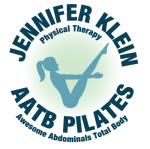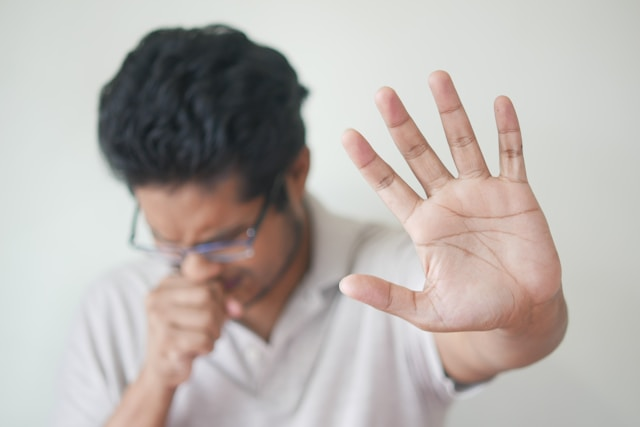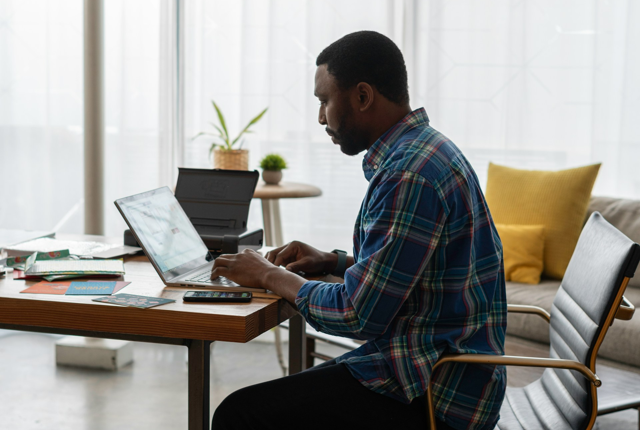Lower back pain is a common ailment that can be more than just a minor inconvenience; it often disrupts daily life and routines. Nearly everyone experiences this discomfort at some point, but understanding its root causes can be a huge relief for those suffering from chronic back pain.
In this guide, we’ll explore the common sources of lower back pain and share effective strategies for relief. By understanding the structure of your back and the potential causes of pain, you’ll be better equipped to address and prevent issues. Whether it’s due to a simple strain or a more complex condition, we’ve got you covered with practical advice and preventive tips.
Quick Answer: What Causes Lower Back Pain?
Lower back pain often stems from muscle and ligament strains, herniated discs, or conditions like arthritis. Factors such as aging, improper lifting, and prolonged sitting can contribute to these issues.
Effective relief strategies include:
- Physical therapy exercises
- Medications
- Lifestyle adjustments like ergonomic improvements and regular activity
If pain persists or is accompanied by severe symptoms, seek medical attention promptly.
Taking proactive steps can help you sidestep more serious problems and keep your back strong and functional.
Anatomy of the Lower Back
Understanding the anatomy of your lower back is key to grasping why pain can develop. The lumbar spine, located in the lower back, comprises five vertebrae stacked like building blocks. These vertebrae support much of the body’s weight and are separated by soft, spongy discs that act as cushions.
These discs absorb shock and allow the spine to bend and twist. Surrounding the vertebrae are muscles and ligaments that offer support and stability, working together to keep us upright and mobile.
Key Components:
- Vertebrae – Strong bones forming the spine’s structure
- Discs – Soft pads that cushion and provide flexibility
- Muscles/Ligaments – Support structures that enable movement and maintain posture
When any of these components are strained, irritated, or injured, pain can arise; reminding us how essential our back is to daily activities.
Common Causes of Lower Back Pain
Lower back pain can originate from many sources. The most common include:
- Muscle and Ligament Strains – Overexertion or lifting with poor form can stretch or tear muscles and ligaments, leading to pain and stiffness.
- Degenerative Disc Disease – Age-related wear and tear can reduce disc flexibility, sometimes causing painful bone-on-bone contact.
- Herniated Discs – Discs can bulge or rupture, pressing on nerves and causing pain, numbness, or tingling.
- Spinal Stenosis – Narrowing of the spinal canal that puts pressure on nerves, often resulting in weakness or pain.
- Arthritis – Osteoarthritis can wear down cartilage in the spine, leading to inflammation and stiffness.
Other contributing factors include:
- Obesity – Extra weight increases spinal strain.
- Poor Posture – Slouching or sitting for long periods adds stress to the spine.
- Sedentary Lifestyle – Weakens supporting muscles, making the spine more injury-prone.
Understanding the cause is the first step toward relief and prevention, allowing you to address the problem directly and confidently.
Risk Factors and Prevention
Knowing your risk factors helps you stay one step ahead.
Key Risk Factors:
- Age & Genetics – Natural wear and tear and hereditary conditions like disc degeneration.
- Lifestyle Choices – Smoking reduces spinal blood flow; poor diet and inactivity weaken support structures.
Prevention Tips:
- Maintain a healthy weight to reduce spinal strain.
- Engage in regular exercise to strengthen core and back muscles.
- Practice good posture, especially during long sitting periods.
- Lift safely—bend at the knees, not the waist.
Effective Relief Strategies
Finding relief often means combining several approaches:
Physical Therapy
- Strengthening and flexibility exercises tailored to your needs.
Medications
- OTC pain relievers like ibuprofen or acetaminophen.
- Prescription options for more severe cases.
Alternative Therapies:
- Dry Needling – May stimulate nerves and muscles to relieve pain.
- Massage Therapy – Loosens tense muscles and promotes relaxation.
- Chiropractic Care – Restores joint mobility through targeted adjustments.
Lifestyle Modifications:
- Use ergonomic chairs and work setups.
- Apply heat or cold therapy for inflammation or tension.
- Reduce stress with yoga, stretching, or meditation.
When to Seek Medical Attention
Most lower back pain improves with self-care, but seek medical help if you experience:
-
- Constant pain even when lying down
- Pain that spreads down your back and into your legs
- Pain accompanied by weight loss, swelling, or discoloration
- Pain lasting more than a few weeks despite home care
- Numbness, weakness, or tingling in the legs
- Changes in bowel or bladder control (possible sign of cauda equina syndrome)
Early intervention can prevent minor issues from becoming major problems. Trust your instincts; if something feels off, get it checked.
General Strategies for Relieving Lower Back Pain
When dealing with lower back pain, a few proactive strategies can make a world of difference in your daily comfort and health.
Physical Activity
Engage in low-impact exercises like walking, cycling, or swimming. These activities help keep your back flexible and strong.
Stretching and Strengthening
Incorporate daily stretches and core exercises to support your spine. Consider poses like the cat-cow or child’s pose for gentle stretching.
Pilates for Core Support
Pilates is highly effective for strengthening the deep core muscles that stabilize your spine. Controlled movements and breathing techniques improve posture, flexibility, and muscle balance, making pilates an excellent complement to other back pain strategies. Even simple mat-based exercises, like pelvic tilts or leg slides, can reduce strain on your lower back and help prevent future discomfort.
Physical Therapy Guidance
Working with a licensed physical therapist can give you a tailored plan for recovery and prevention. Therapists use specialized assessments to identify the root cause of your pain and prescribe targeted exercises, manual therapy, and education to improve mobility and strength. Physical therapy also helps correct faulty movement patterns that may be contributing to your discomfort.
Posture Correction
Pay attention to your posture throughout the day. Whether sitting at a desk or standing, keep your back straight and shoulders relaxed.
Weight Management
Maintaining a healthy weight reduces the load on your spine, decreasing the likelihood of pain.
Heat and Cold Therapy
Utilize heat pads to relax tense muscles or ice packs to reduce inflammation. Alternate between the two for best results.
Over-the-Counter Medications
Consider using NSAIDs or acetaminophen to manage pain, but consult with a healthcare provider if you have any concerns.
How to Relieve Lower Back Pain from Lifting
If your lower back pain is linked to lifting, tweaking your technique can make a big difference.
Proper Lifting Techniques
- Bend at the Knees: Keep your back straight and use your legs to lift.
- Avoid Twisting: Turn with your feet, not your waist, to prevent strain.
- Hold Close to Your Body: Keep the load close to your body’s center of gravity.
Use of Supportive Devices
Consider using a back brace for extra support, especially if lifting is a regular part of your routine. It’s like having an extra set of hands!
Strengthening Exercises
Focus on exercises that build strength in your core and back muscles. Planks and bridges can help create a solid foundation to prevent injuries.
How to Relieve Lower Back Pain from Running
Running is fantastic for fitness but can be tough on the back if not done correctly.
Warm-Up and Cool-Down
Start with gentle stretching and a brisk walk to prepare your muscles. Cooling down with similar stretches helps prevent soreness.
Footwear Selection
Invest in good quality running shoes that provide ample support and cushioning. Shoes that fit well and address your foot type can reduce impact stress.
Running Form
Maintain a slight lean forward, with your head up and shoulders relaxed. This posture helps reduce strain on your lower back.
Surface Selection
Whenever possible, run on softer surfaces like grass or trails. They offer better shock absorption compared to concrete or asphalt, which can be like running with a rock in your shoe.
How to Relieve Lower Back Pain from Stress
When we’re stressed, we tend to clench through the neck, shoulders, & lower back, breathe shallowly, and move less; all of which can ramp up pain.
Quick Wins
- Box breathing (4-4-4-4): Inhale slowly through your nose for 4 seconds, hold your breath for 4 seconds, exhale through your mouth for 4 seconds, then hold again for 4 seconds. Repeat this steady pattern for 2–3 minutes to calm your nervous system and loosen muscle tension in your back.
- Heat, then move: Apply a warm pack 10–15 minutes to ease guarding, then take a 10-minute walk.
- Micro-unclench: Set a reminder every hour; drop your shoulders, unlock your jaw, and lengthen your spine.
Daily Habits
- Stress stretches: 5–7 minutes of gentle mobility (cat–cow, child’s pose, pelvic tilts) 2–3 times per day.
- Core + breath pairing: Practice diaphragmatic breathing while doing low-load core work (dead bugs, heel slides, bridges).
- Sleep hygiene: Aim for consistent bed/wake times; poor sleep heightens pain sensitivity.
Consider Help
- If stress is persistent, cognitive behavioral strategies, mindfulness training, or a few sessions with a counselor can reduce pain amplification and improve coping.
- Consider physical therapy if stress-related back pain lasts longer than 2–4 weeks, keeps returning, or limits daily activities (work, sleep, lifting).
How to Relieve Lower Back Pain from Coughing
Frequent or forceful coughing can strain the intercostals, abdominals, and the lumbar area, especially if you’re bracing poorly.
Technique Tweaks
- “Huff” cough: Open mouth, exhale forcefully like fogging a mirror to move mucus with less strain than a sharp cough.
- Pillow brace: Hug a small pillow or folded towel to your abdomen when you must cough to support tissues.
- Stacked posture: Sit tall with ribs over pelvis; avoid slumping, which increases lumbar pressure.
Self-Care
- Hydration + humidity: Keeps airways moist and reduces cough force.
- Short mobility sets: Child’s pose, thread-the-needle, and gentle trunk rotations 1–2 times daily.
- Heat/ice as needed: Heat for muscle tightness; ice if the area feels irritated after coughing bouts.
When to Call a Clinician
- Cough > 3 weeks, fever, chest pain, shortness of breath, or coughing up blood warrants prompt medical evaluation.
- If back pain persists after the cough improves, or you feel rib/back strain with each cough, a PT can assess for muscle spasm, rib joint irritation, or movement restrictions.
How to Relieve Lower Back Pain from Standing
Prolonged standing loads the posterior chain and can fatigue the lower back, hips, and calves.
Posture & Positioning
- Weight shift rule: Alternate feet every 5–10 minutes. Place one foot on a low step or box to unload the lumbar spine.
- Stacked alignment: Ears over shoulders, ribs over pelvis, slight knees-unlocked stance.
- Surface & footwear: Use an anti-fatigue mat and supportive shoes; consider cushioned insoles if you stand all day.
Movement Breaks
- Microbreak cadence: 30–60 seconds every 20–30 minutes; march in place, ankle pumps, mini hip hinges.
- Decompressors: Standing “wall reach” (lightly tuck pelvis and reach arms overhead) and calf/hamstring stretches.
Strength That Helps
- Glutes + core: Bridges, side-lying leg raises, and planks 3–4 days per week build endurance that protects your back.
Physical Therapy — When It Helps
- Consider PT if standing pain shows up daily, eases only when you sit/lie down, or has lasted more than 2–4 weeks.
- A PT can identify whether the driver is hip weakness, limited ankle/calf mobility, or lumbar endurance, then recommend exercises and work-station strategies to extend your pain-free standing time.
How to Relieve Lower Back Pain from Sitting
Ergonomic Essentials
- Hips slightly above knees: Use a seat wedge or adjust chair height.
- Feet grounded: Flat on the floor; add a footrest if needed.
- Lumbar support: A small cushion or rolled towel at the belt line preserves the natural curve.
- Screen at eye level: Keeps head from drifting forward; keep keyboard/mouse close to avoid reaching.
Movement Rules
- Break the sit: Stand or walk 2–3 minutes every 30–45 minutes.
- Desk mobility: Seated figure-four stretch, gentle trunk rotations, and shoulder blade squeezes.
Strength & Balance
- Hip flexor counter-stretch: Half-kneeling hip flexor stretch 30–45 seconds per side.
- Core endurance: Dead bugs, bird dogs, side planks 3–4 days a week to improve tolerance for sitting and standing.
Physical Therapy — When It Helps
- If sitting consistently triggers pain, numbness, or stiffness that lasts after you stand up, or symptoms persist beyond 2–4 weeks, PT can help.
- PT can provide an ergonomic screen, progress core/hip endurance safely, and modify your sitting schedule to reduce disc and joint loading without losing productivity.
- Seek medical care urgently (before contacting a PT) if sitting pain includes new leg weakness, saddle numbness, or bowel/bladder changes.
When to Seek Professional Help
Sometimes, our bodies throw curveballs that require a little extra attention. Knowing when to seek professional help for lower back pain is crucial.
Warning Signs
If you experience any of the following, it’s time to consult a healthcare professional:
- Severe or persistent pain lasting more than a few weeks.
- Numbness or tingling, especially in the legs.
- Loss of bladder or bowel control.
- Sudden unexplained weight loss.
Treatment Options
Healthcare providers might recommend:
- Physical Therapy: Tailored exercises to strengthen your back and improve flexibility.
- Prescription Medications: For more intense pain relief.
- Surgical Interventions: In rare cases where other treatments fail to bring relief.
Final Thoughts on Back Pain Relief
Lower back pain can be a real challenge, but understanding its causes and learning effective relief strategies can make a world of difference. By staying active, using proper techniques in lifting and running, and making lifestyle adjustments, you can manage and even prevent discomfort.
Remember, when in doubt, seeking professional advice is always a wise move. Armed with the right information and proactive habits, you can take control of your back health and get back to doing what you love, without the pain holding you back.
If you’re in the Houston, TX area and need help managing your back pain, give us a call!






Recent Comments